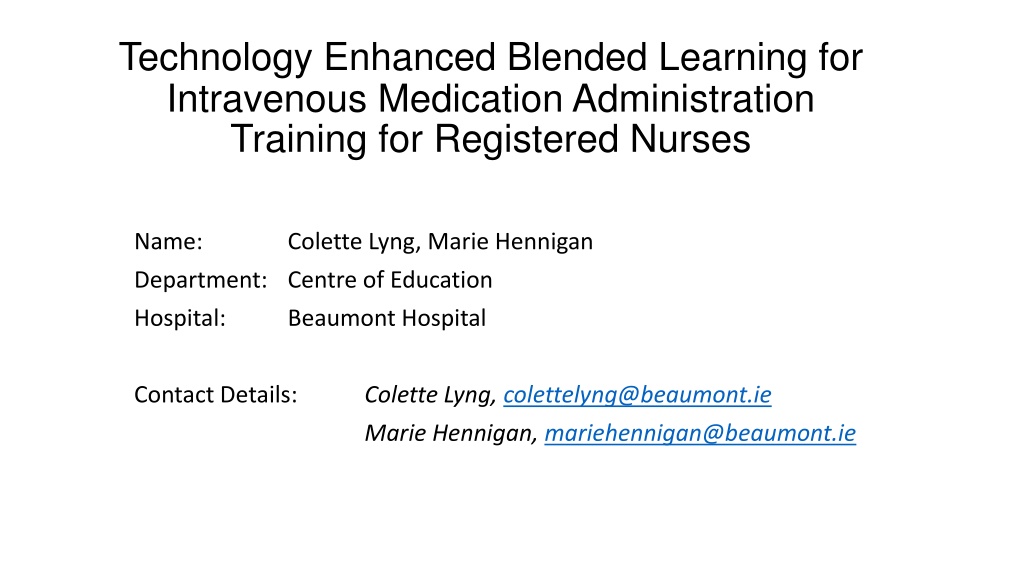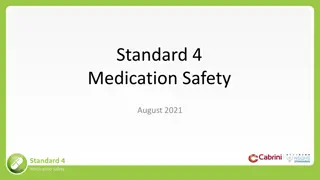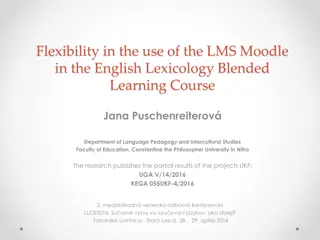Technology-Enhanced Blended Learning for IV Medication Administration Training
Registered nurses at Beaumont Hospital underwent a redesign in their training program, incorporating a technology-enhanced blended learning approach using a Learning Management System. The initiative aimed to align the program with required learning outcomes, enhance nurse learning experiences, and improve organizational oversight. By introducing online theoretical components, reducing classroom-based sessions, and automating assessments, nurses benefitted from increased flexibility, dedicated skills workshops, and streamlined certification processes. The ongoing adaptation of the program, as seen during the COVID-19 pandemic, ensures it remains responsive to changing circumstances and guidelines.
Download Presentation

Please find below an Image/Link to download the presentation.
The content on the website is provided AS IS for your information and personal use only. It may not be sold, licensed, or shared on other websites without obtaining consent from the author. Download presentation by click this link. If you encounter any issues during the download, it is possible that the publisher has removed the file from their server.
E N D
Presentation Transcript
Technology Enhanced Blended Learning for Intravenous Medication Administration Training for Registered Nurses Name: Department: Centre of Education Hospital: Beaumont Hospital Colette Lyng, Marie Hennigan Contact Details: Colette Lyng, colettelyng@beaumont.ie Marie Hennigan, mariehennigan@beaumont.ie
Background Registered nurses and midwives must undergo specific training before they may administer intravenous (IV) medications (ONMSD, 2013). This training has theoretical, practical, and assessment components which, until recently, were achieved using a blend of classroom and clinically based education. The introduction of a Totara based Learning Management System (LMS) to enabled us to review the delivery of this training Aim To use the available human, material and technological resources to develop a constructively aligned (Biggs, 1996) programme that meets the required learning outcomes of this training, enhances learning for registered nurses participating in this education, and improves organisational oversight and governance of this compulsory training for nurses who administer IV medication. Change initiative The resources available were utilised to redesign the delivery of this training for registered nurses. The PDSA model was used to develop, implement, and continually improve this constructively aligned, technology enhanced, blended learning programme that meets the nationally stipulated learning outcomes for this required training. The key changes were - Appropriate theoretical components transferred online - Classroom based theory reduced - Skills workshop introduced - Appropriate assessments transferred online - Clinical assessment documentation submitted and verified online - Automated reporting introduced
PDSA In keeping with the PDSA model, this technology enhanced education programme is continually reviewed and appropriate changes are made on an ongoing basis in response to changing circumstances (e.g. Covid-19), changing local and national guidelines and policies, and feedback from students and colleagues. Key outcomes 1. All newly recruited nurses complete this technology enhanced learning programme. 2. Online components can be completed at a time, place, and pace that is convenient for the nurse. 3. The skills workshop enables nurses to ask questions and seek clarifications in a dedicated safe space away from the hectic ward setting. 4. Online assessments and automated certification of completion enable a rapid turnaround of results allowing nurses to perform this role earlier than previously. 5. Computerised tracking and generation of automated reports allows a level of oversight and governance that was not previously possible. 6. Attendance and assessment information is stored online so there is no requirement for collation of documents, or for storage or retrieval of documents. Point of Note Covid-19 was unheard of when we were devising and implementing this programme. However, it proved invaluable during the pandemic when public health advice, guidelines and restrictions impacted how education was delivered. The work already completed meant that newly recruited nurses could progress with this training unimpeded.
Sustainment This technology enhanced blended learning programme was implemented at the end of 2019 and is now an integral part of the Nursing Induction programme. The framework used can be easily replicated for other similar programmes. Value to patients, colleagues and organisation The skills workshop enables nurses to learn medication administration and ask questions in a dedicated safe space prior to their supervised practice in the clinical setting. Rapid turnaround of results ensures quicker certification of programme completion which allows nurses to perform this role earlier than previously possible. Automated reporting and rapid retrieval of information gives an enhanced level of oversight and governance that was not previously possible. Conclusion We have used the human, material and technological resources available to redesign the delivery of this required training for registered nurses. We have developed a constructively aligned, technology enhanced blended learning programme the meets all of the learning outcomes for this required training References Biggs, J. (1996) Enhancing teaching through constructive alignment , Higher Education, 32(3), pp. 347 364. ONMSD (2013) National Policy for the Administration of Intravenous Medication by Registered Nurses and Midwives (https://www.hse.ie/eng/services/publications/nursingmidwifery%20services/ivmedication.pdf)























